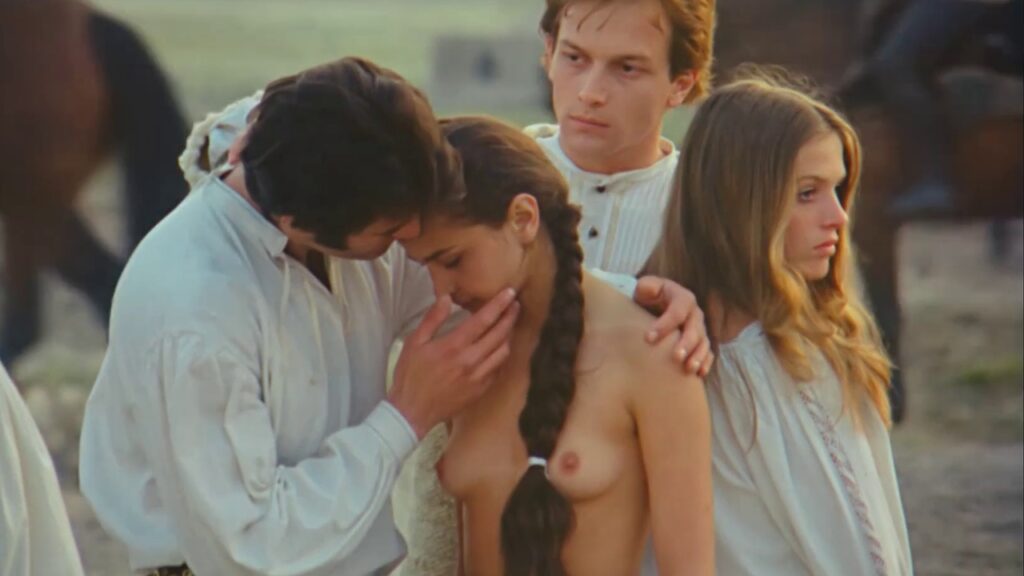
Szerelmem, Elektra (1974) is a reinvention of the Greek myth Electra by filmmaker Miklós Jancsó. Jancsó continues to strip back the medium even more than his previous films, staging the narrative in a series of twelve tableaus in just as many shots. In Szerelmem, Elektra Jancsó fully realizes the aesthetic he had slowly been building toward where cuts/edits exist only when necessary with camera moves in long takes replacing the usual technique of montage.
Elektra (Mari Törőcsik) in Jancsó’s film is a revolutionary who helps lead an a revolt against the tyrannical Aegisztosz (József Madaras) with her brother Oresztész (György Cserhalmi). Jancsó proposes with this film that revolutionaries such as Elektra and her brother must be reborn every day, that regimes must be fluid and turn with the changing tides of the people. The film is densely populated with images suggestive of Jancsó’s Marxism, some are even anachronistic, whose cumulative impact is powerful.
Jancsó’s adept symbolism is at its most provocative in this, his grandest gesture of cinematic minimalism. Signifiers pile up, one upon the other, as the camera directs the viewer’s gaze, loosely tracking Elektra across the Hungarian steppe. With every shot a tableau of six minutes or more the effect is intense. Still, the real spectacle is the meticulously choreographed movements of dozens of performers acting out theatrical rites and rituals. The ever moving frame catches up to five unique performances at a time, filling the image with multiple scenes played out in microcosm.
Szerelmem, Elektra is virtuosic cinema at its purest, where narrative exists exclusively as an image. This was Miklós Jancsó’s last truly avant-garde film before he relocated to Italy, and can therefore be seen as the climax of a style that began some ten years earlier. Few calls for revolution have ever been as beautiful as Szerelmem, Elektra.
